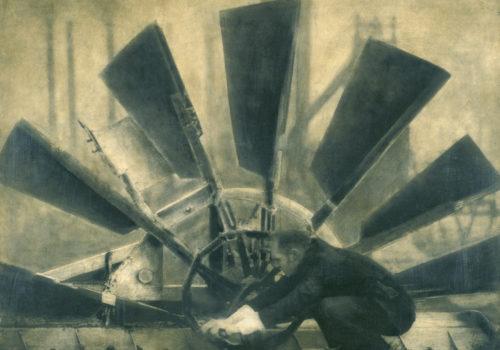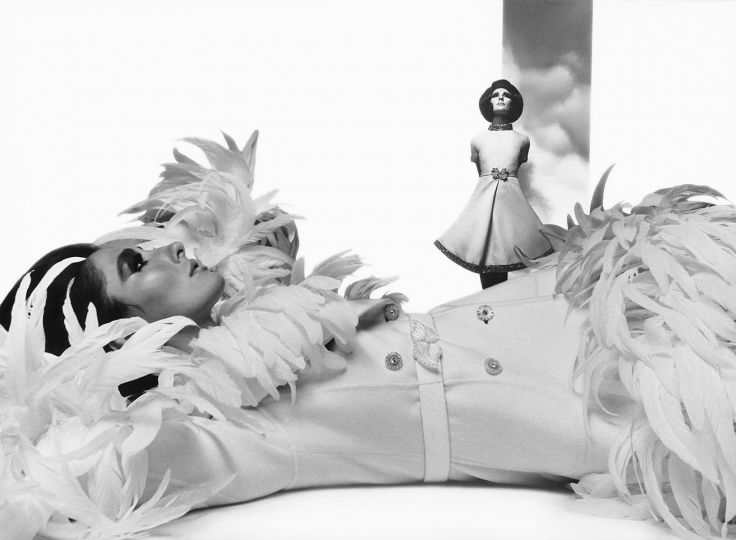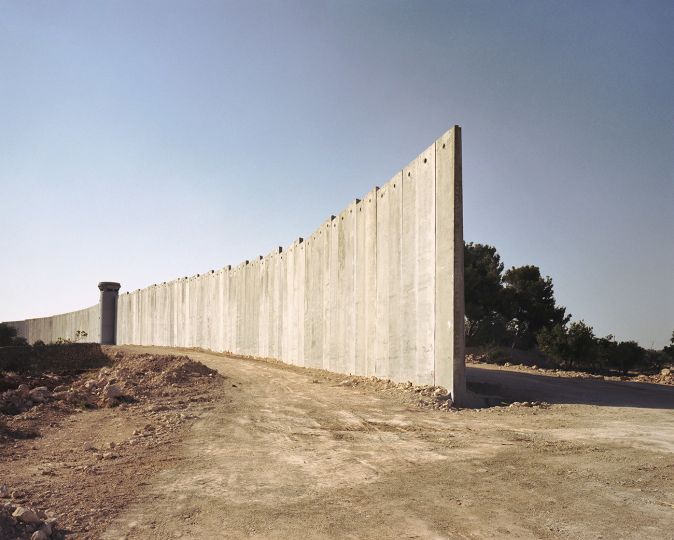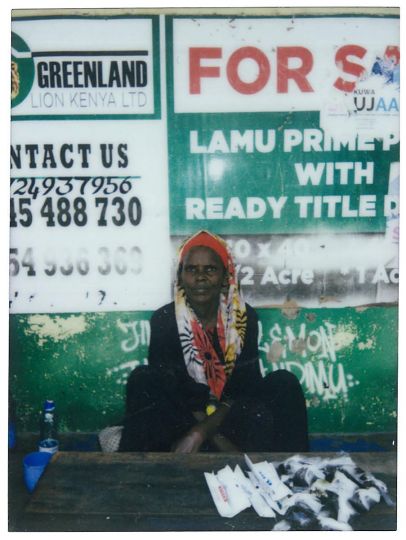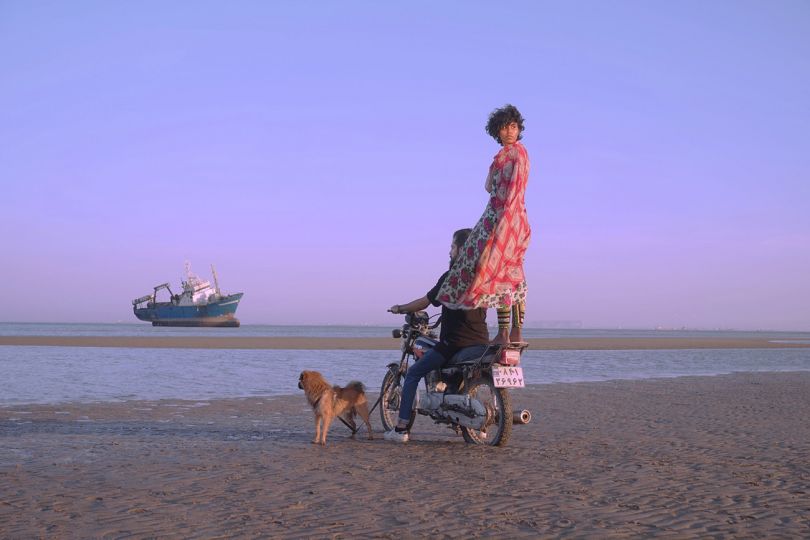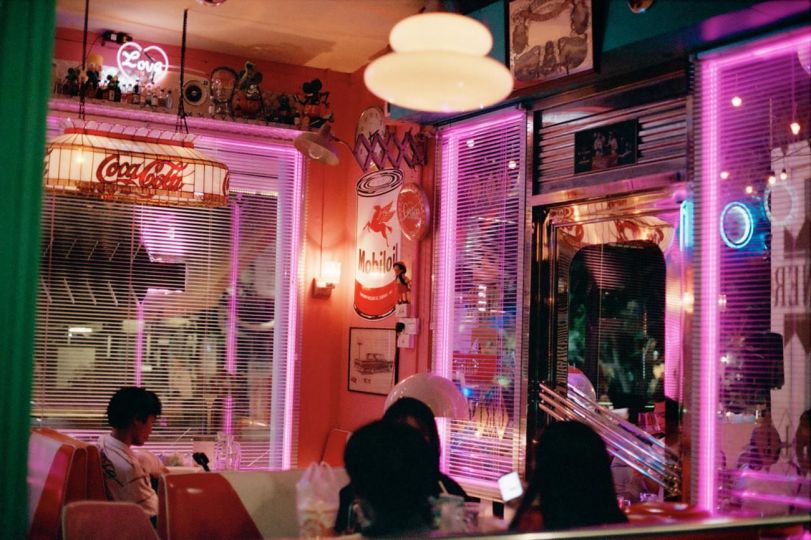An American couple Robert and Shana ParkeHarrison’s fine art photography embodies a world of surreal and symbolic imagery, where Robert is the main character. Their photographs have been displayed in over 45 solo exhibitions and over 100 group shows worldwide and their work can also be found in over thirty-five collections, including the National Museum of American Art at the Smithsonian Institution, The George Eastman House, The Whitney Museum, LACMA, and SFMOMA. Their book, the Architect’s Brother was named as one of “the ten best photography books of the year in 2000 by the New York Times.”
“Our photographs offer visual poems of loss, human struggle and personal exploration with landscapes scarred by technology and over–use. As collaborative artists, we strive to link laborious actions, idiosyncratic rituals, and strangely crude machines metaphorically and poetically into tales about our contemporary experiences. We construct elaborate sets from found objects. Our scenes combine real and constructed landscapes. These scenes have a sense of determination and irony while addressing mankind’s responsibility to heal the damage inflicted on the environment.
Staged images offer endless possibilities for exploration while offering viewers personal interpretation. By allowing viewers to complete the story before them, we allow agency to take hold within them. We develop layers of duality, hope and despair, success and failure, desire and distain, destruction, and stewardship. We explore the fragile human condition, and overarching shadow of environmental destruction. Perhaps the only try hope for the world and our human spirit rests in our ability to imagine.” ParkHarrison
Links here to website: https://www.parkeharrison.com
Patricia Lanza: Your work focuses on the Anthropocene, the human effect on the earth. How did you come to use this as your theme and narrative?
ParkeHarrison: The Anthropocene, Global Warming, Climate Change, The End of Days, the Great Reckoning, The End of the World as we Know it. In the early 1990’s when our ideas began to gel into elusive yet cohesive imagery, these terms were not even discussed in media or popular culture. It was a concern for many scientists and academics but not the rest of us. We were in Graduate school in New Mexico. We were two naïve kids from suburban midwestern families. Beyond being sent to our rooms for failing to turn off the lights during the Energy Crisis, we had never even thought about Climate Change. Our exposure to the stunning raw beauty of the New Mexico landscape, the compelling religious practices and world view of the Hopi, along with other indigenous people, and as well as the overwhelming footprint of the US military, industrial complex (Los Alamos National Labs and White Sands/Trinity Site) These elements along with our tendencies toward performance-based photography and our desire to create art tied to purpose, merged into images focused on humankind’s behavior toward the Earth.
Patricia Lanza: Your work is a collaboration, how did this come about?
ParkeHarrison: Our collaboration grew organically over many years and many in depth conversations about art. We were each in grad school for creative endeavors. Our collaboration began as assisting one another, and slowly grew/ merging our interests and technical tendencies.
Patricia Lanza: As co-creators discuss your process in the development and construct of the photography including technically and content?
ParkeHarrison: Our process is layered with research, contemplation, and experimentation. Our images show a confluence of concerns and subjects that interest us including:
Politics, human behavior, theater, dance, religion, literature, film, environment topics, science, metaphysics and on and on. We typically begin new work by looking back at old work: how ideas worked as images, how they failed to fully embody our intent. We combine this information with topics of interest. From there we begin researching in a Butterfly effect sort of process. Ideas take us down rabbit holes where we find new interests. All of this searching leads to drawings. Drawings lead to the integration of props, often based on discarded materials and debunked devises. We then play with these objects, often inventing new purposes for
old machines. We begin testing images in the landscape and experimenting with possibilities beyond our initial ideas. Finally, we photograph images to be combined in either the darkroom or within photoshop. Once the images are printed they are not necessarily complete. Often they will be painted to enhance/encase them.
Patricia Lanza: You illustrate the theme in a surreal world full of symbolism. Where do you draw your inspiration?
ParkeHarrison: It would be great to walk in the store to the isle of inspiration! Making art takes daily practice, a honing of one’s skills and a constant inquisitive nature. We draw inspiration through constant focus.
Patricia Lanza: What or Who are your influences?
ParkeHarrison: Cultural and environmental writings, theater, film, dance, religion, politics, literature. Artists that come to mind today: Bill McKibben, Gabriel Garcia Márquez, Robert Wilson, Joseph Beuys, Andrei Tarkovsky, Wim Wenders, Louise Bourgeois, Pina Bausch, Ohad Naharin and so many more!
Patricia Lanza: How can and does the creation of ART have effect on important issues? What are you hoping for in yours?
ParkeHarrison: Visual art often involves the individual viewer forming his/her/their own interpretation of the artwork they are engaging. We attempt to create work that asks questions, work that allows the viewer to enter and form their own story, and personal meaning. We create work that is influenced by the philosophy of Joseph Beuys.
He believed art has the ability to promote change. By allowing viewers to engage freely within the world we create, viewers find their purpose and their response to the topics we speak to, most notably environment action.
Patricia Lanza: Discuss your latest photographic series and exhibition?
ParkeHarrison: We recently completed a small series of photo-lithographs titled, RED SUN. These images are fairly simple in their construction when compared to much of our work. Each print contains the isolated figure, the protagonist, engaging in actions, with Red interventions. While this was supposed to be a small suite of images we were inspired to continue this work involving interventions. Currently we are experimenting with ideas involving photographic imagery and sculptural components.

